#chinese design
Text

Buckle. Chinese origin, dated mid to late Qing Dynasty era (about 1700–1911). Medium is abraded jade with pink and yellow tourmaline. Dimensions: 3.81 x 11.11 x 2.22 cm. From the Chinese Art collection at the Los Angeles County Museum of Art, object number: M.2001.179.26
(Source: collections.lacma.org)
#buckle#clasp#jewelry#fashion#18th century#19th century#qing dynasty#chinese design#stone#jade#tourmaline#pink#yellow
579 notes
·
View notes
Photo

(#3034) A FINE AND RARE LIME-GROUND FAMILLE-ROSE TEAPOT AND COVER SEAL MARK AND PERIOD OF QIANLONG
922 notes
·
View notes
Photo

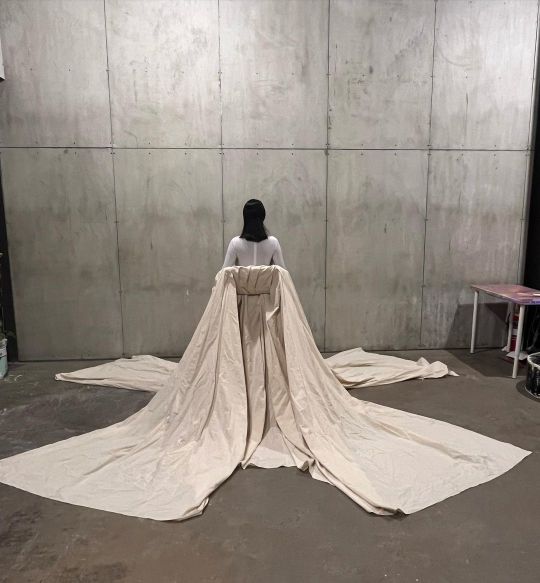
Zhujing Deni Dai ''Under the Burqa''
Creative Director Zhujing Deni Dai
Photographer Sarzyn Lyx
Newest Cool on Instagram
#newestcool#newest cool#Zhujing Deni Dai#Sarzyn lyx#fashion editorial#fashion photography#chinese fashion designer#chinese fashion design#chinese fashion#chinese design#chinese designer#couture gown#couture dress#couture fashion#haute couture#fashion school student#indie brand
86 notes
·
View notes
Text

18 notes
·
View notes
Text
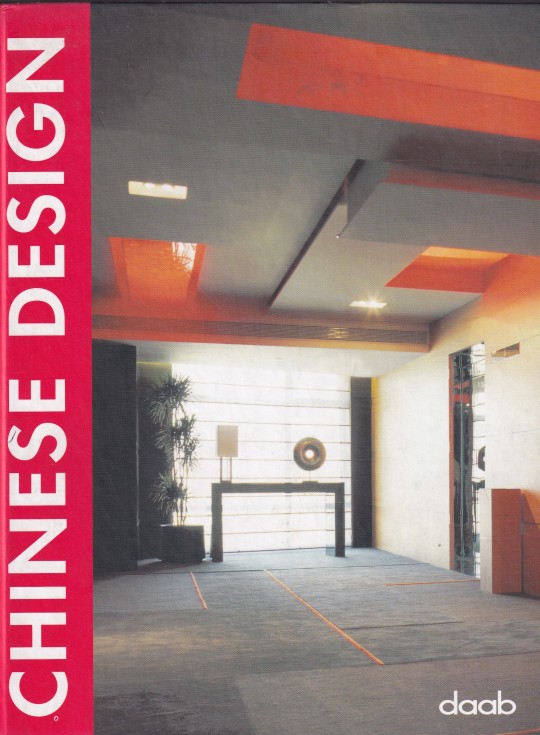
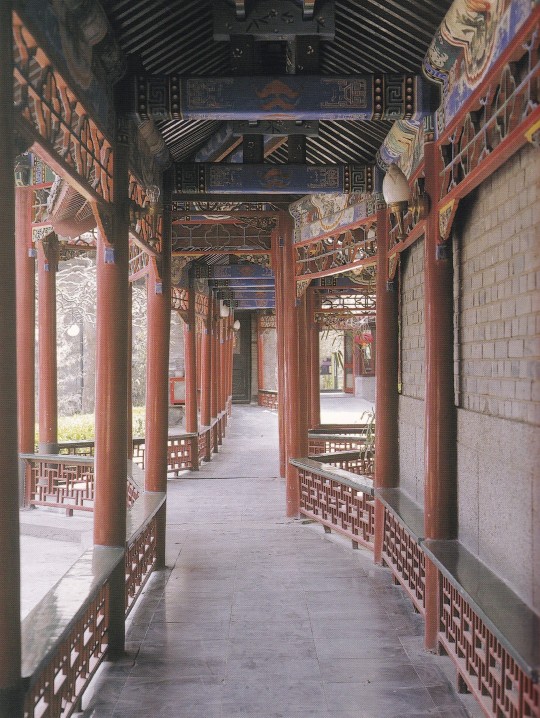
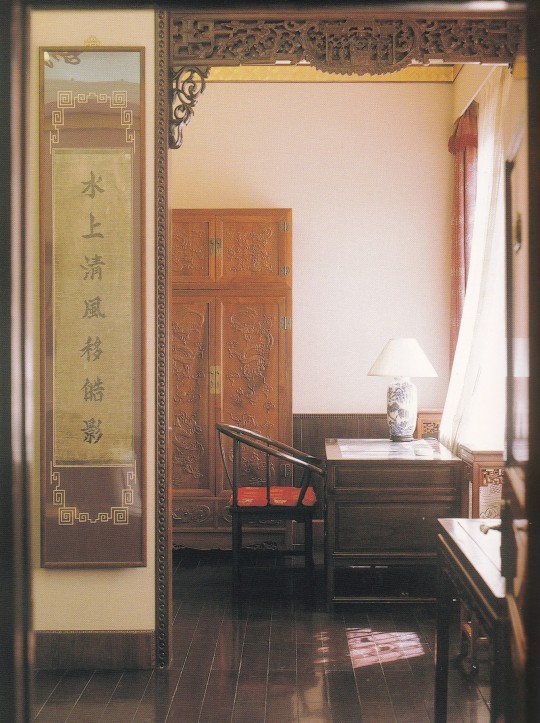

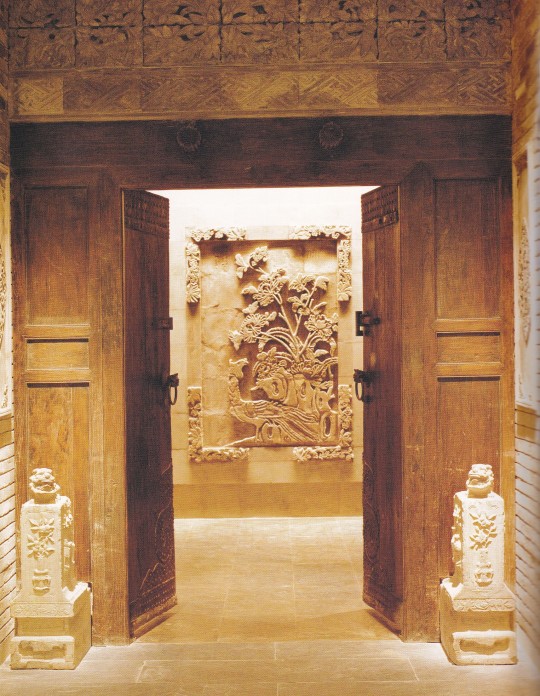
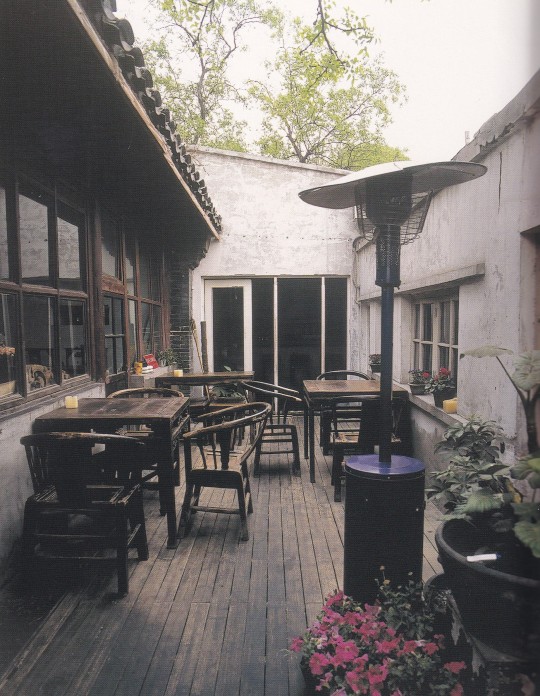

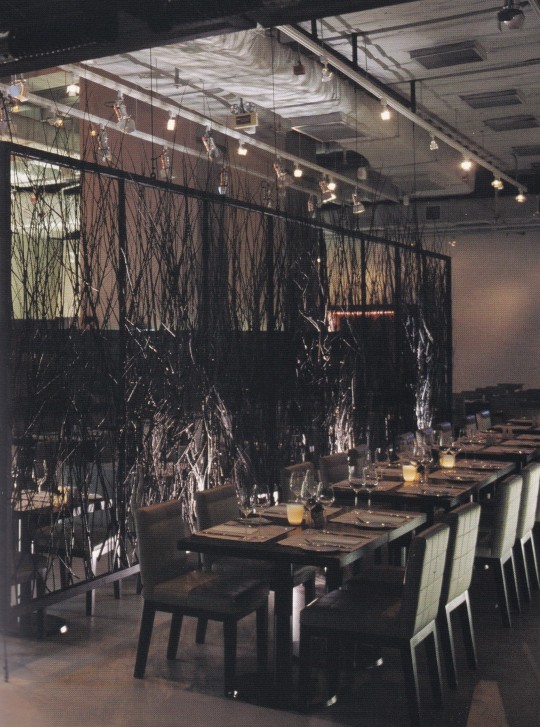

Chinese Design
Daab, Cologne 2006, paperback, 400 pages, 19x24cm, ISBN 9783937718347
euro 18,00
email if you want to buy [email protected]
In this book Chinese Design, we are pleased to introduce a wide array of different architectural projects, and the various designers, architectural ateliers and developers that have made these works come to light. The distribution of the book has been done in three chapters according to the three main geographical areas - Beijing, Shanghai, and Hong Kong - where most of these projects are located. A fourth chapter covers the architectural projects located in other parts of the Chinese mainland.
Like the Great Wall, which with its 2.400 km is the only built structure on earth visible from outer space, China is so huge and profound, that to make an attempt to analyse its design is practically impossible. The basic principle, however, that seemed to influence space design in China was related to a number of different philosophies like Confucianism, Taoism or Fengshui. Although nowadays, in general, people do not really like being bound by ancient tradition, still most of them follow, or at least cannot ignore, that Fengshui laws of space direction or some other philosophies. China's complex, harsh and hazardous history partly explains one of the reasons why many residential houses and buildings look often like solid fortresses, with its inner space clearly separated and differentiated from the outer part of the house. Inside the house compound, the patio serves not only as a source of visual delight, but it is used also for outdoor inner living throughout the various seasons of the year.
Finally we would like to introduce a few distinctisyve examples of iconography in China, symbologie that plays a very important role within Chinese design. Colours like red, aside form being the colour of the Chinese national flag, have signified fortune and luck, since ancient times. Visually, sometimes it seems as if every single city of the country lies under the overriding spell of the Chinese character script.
China's extraordinary appetite for the new was certainly a powerful driving force for its rapid change. The end product is as somewhat general retrofuristic urban landscape spreading all over its cities.
26/04/24
#Chinese Design#Beijing#Hong Kong#Shanghai#chinese mainland#architectural projects#designbooksmilano#fashionbooksmilano
6 notes
·
View notes
Text


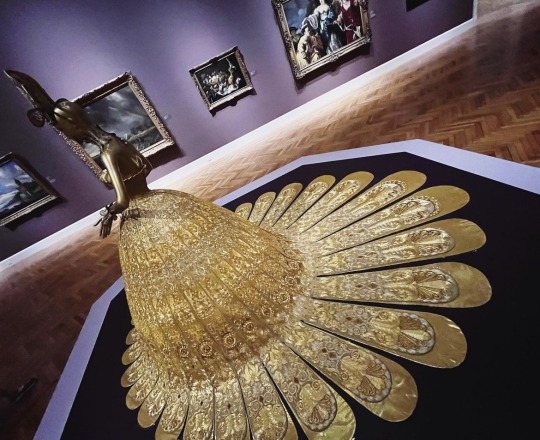

San Francisco's Legion of Honneur museum offers a dazzling selection of Guo Pei’s magnificent haute couture gowns created from 2006 to the present. Considered to be the first Chinese haute couturier, Guo Pei grew up during the Chinese Cultural Revolution, a tumultuous period where anything belonging to China’s Imperial past - traditions, script, literature, arts and antiquities, family histories and property - were all forbidden or destroyed. With an inexhaustible vocabulary of traditional motifs (lotus, Buddha, dragon, lilies, peacocks) woven onto sumptuous gold thread, “Guo Pei creates a fantasy that fuses the influences of China’s imperial past, decorative arts, European architecture, and the botanical world.” As imposing as the garments are, they also seem to poke fun at the spiritual and cultural weight of couture and Chinese traditional values. In several of her architecture series pieces, she uses bamboo strips, a material usually used as throwaway building scaffolding, in constructing Edwardian-style hoop skirts with boned corsets. In another couple of pieces from the same collection, she references Gothic cathedrals in monochrome embroidery on silk gauze: One can see pointed arches, flying buttresses, and stained glass sections placed where the wearer’s chest would be. Formerly reserved by law for the royal court, yellow silk dragons make their appearance time and again over gowns, deconstructed epaulets, even chaps held up by gold ribbons.
7 notes
·
View notes
Text

繼續嚎叫 (2018)
#graphic design#design#chinese#china#chinese design#chinese music#punk music#punk rock#album#album cover#art#music
6 notes
·
View notes
Text




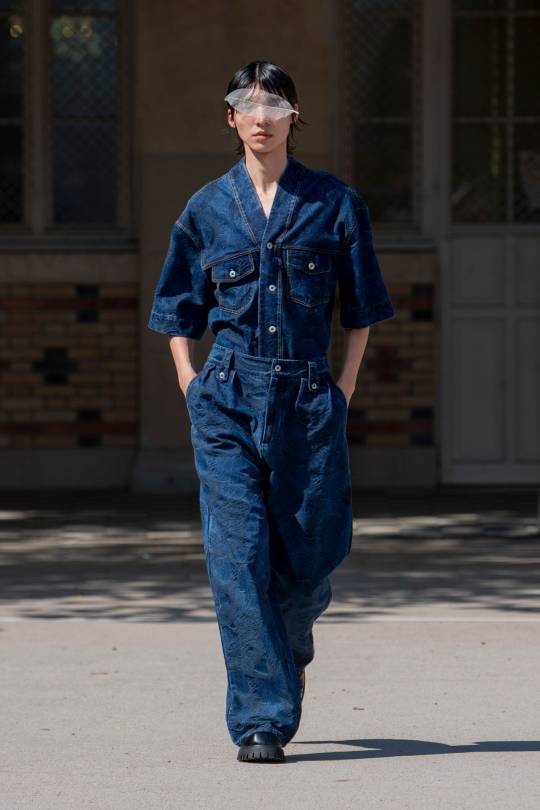




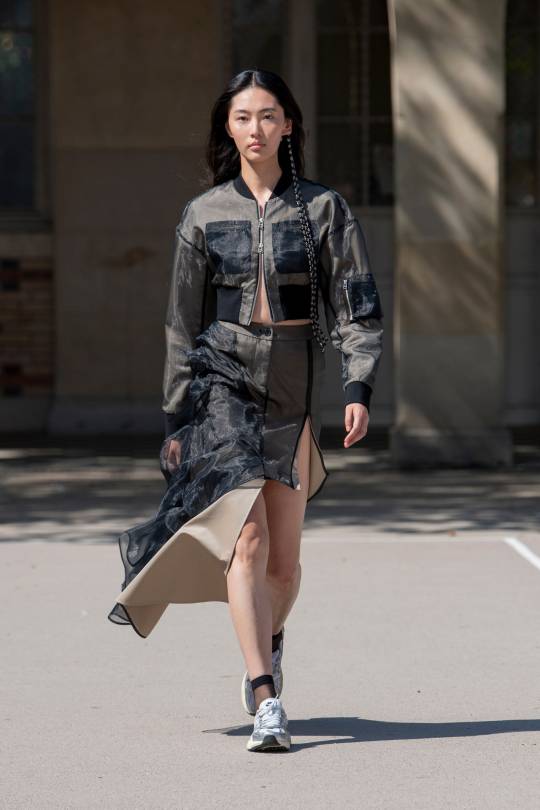
Feng Chen Wang / Spring 2024 Menswear
#PFW - Paris Fashion Week
2 notes
·
View notes
Note
a dragon but disguised as fruit would be the best shock to stumble upon

#11 - 火龍果 (dragon fruit)- I don't see a dragon here, do you? 🐲🍓🌟
Bonus:

His ass does NOT cost 39元
#ask and you shall receive :3#art#art challenge#artists on tumblr#chinese artist#dragon a day#dragon#dragon art#dragons#dragon oc#daily drawing#daily dragon drawing#daily dragon#chinese dragon#drawing#illustration#year of the dragon#zodiac#fantasy creature#creature design#dragon fruit#dragon fruit dragon
16K notes
·
View notes
Text

XANDER ZHOU
SHANGHAI SPRING 2024
In Shanghai, Xander Zhou welcomed guests to what he called a "Pro A.I.Volution" Intergalactic Expo.
Researchers traveled from galaxies all across the cosmos to witness the unveiling of something many suspected already existed: humans that have evolved in tandem with the rest of us, but exceptionally faster. These humanoids look -for the most part-just like us, but they have evolved by way of absorbing Al (Artificial Intelligence) and IA (Intelligence Amplification). They're superhuman and super-intelligent.
#fashion#runway#vogue runway#chinese design#chinese fashion#shanghai fashion week#high fashion#ai#humanoid
1 note
·
View note
Text

Snuff Bottle. Chinese origin, made during the Qianlong reign period (1736–1795) of the Qing Dynasty (1644–1911). Medium is pink glass with white and black overlay. Dimensions: h. 7.3 cm x w. 6.0 cm x d. 2.8 cm. From the Princeton University Art Museum, object number: y1936-539.
(Source: artmuseum.princeton.edu)
#bottle#vessels#1700s#18th century#qianlong period#qing dynasty#chinese design#animal motif#horses#glass#pink#white
274 notes
·
View notes
Text
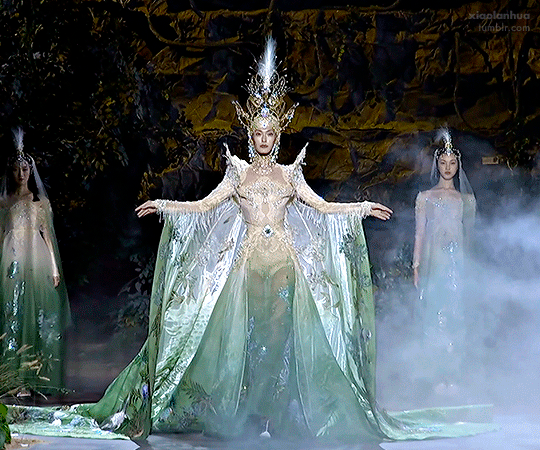




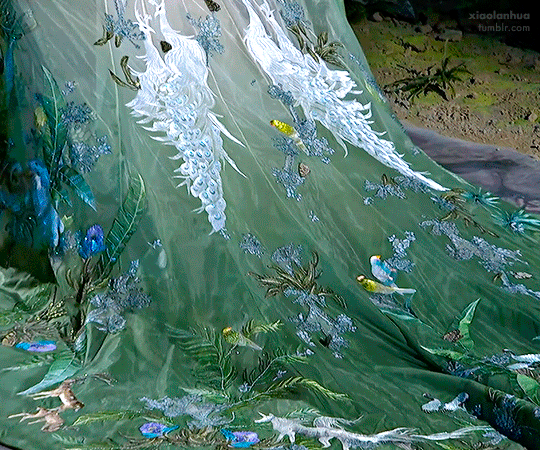
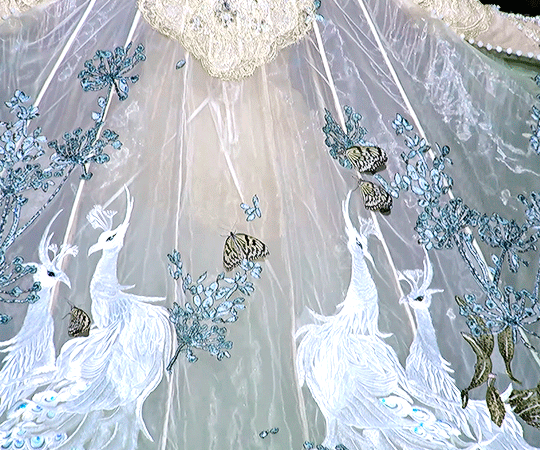
Heaven Gaia Spring/Summer 2022
"Qian Kun · Fang Yi"
#heaven gaia#heaven gaia ss 2022#xiong ying#fashion#haute couture#runway#couture#fashion edit#couture edit#my gifs#*#chinese fashion#heaven gaia spring summer 2022#fashion show#fashion design#i am mesmerized#2k
3K notes
·
View notes
Text

Happy New Year from Trixie Lulamoon [🇭🇰] and Carol Cho (Coco Pommel) [🇰🇷] as well!
Both designed by @tulliok.
#mlp#trixie lullamoon#coco pommel#the original plan was to include rarity in this but i ran fresh outta time#and i already drew rarity#both trixie and carol were designed by tulli#trixie is wearing a tangzhuang and carol's wearing a hanbok#this weekend has been crazy busy had a lot more planned for this but decided to just finish what i can and post it#gotta move on the valentines day art#my art#fanart#the grand galloping 20s#happy lunar new year#happy seollal#happy chinese new year
3K notes
·
View notes
Text
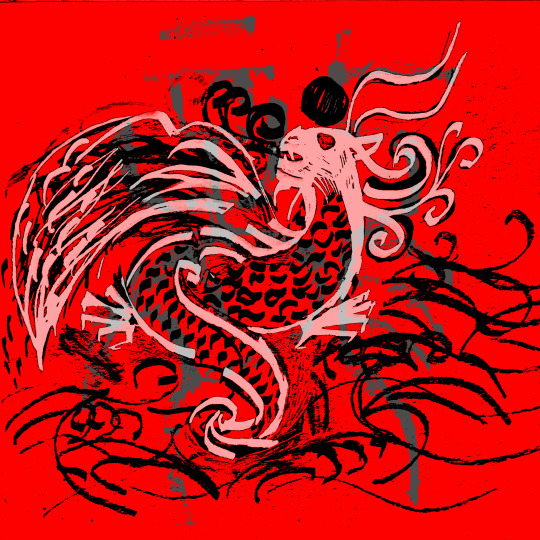
#m210297#poster#graphic design#posterart#anna kuzminskaya#chinese design#m210297_posters#calligraphy#dragon#dragon illustration#chinesecalligraphy#chinese#dragon tattoo
7 notes
·
View notes
Text
Fantasy Guide to Interiors



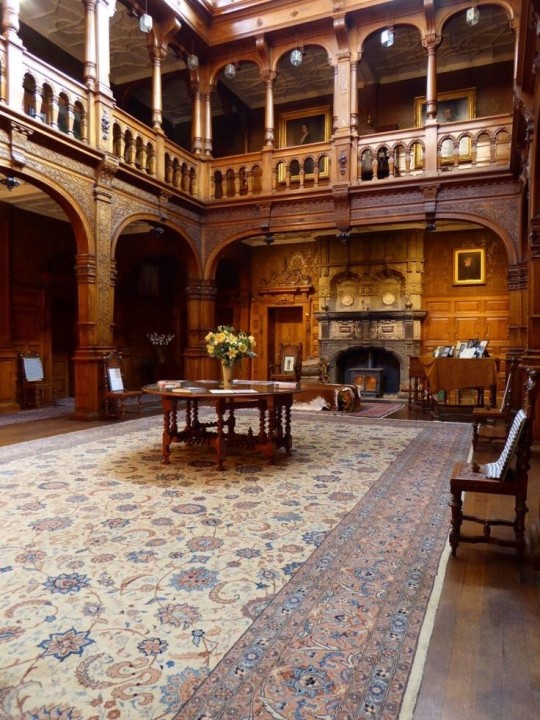
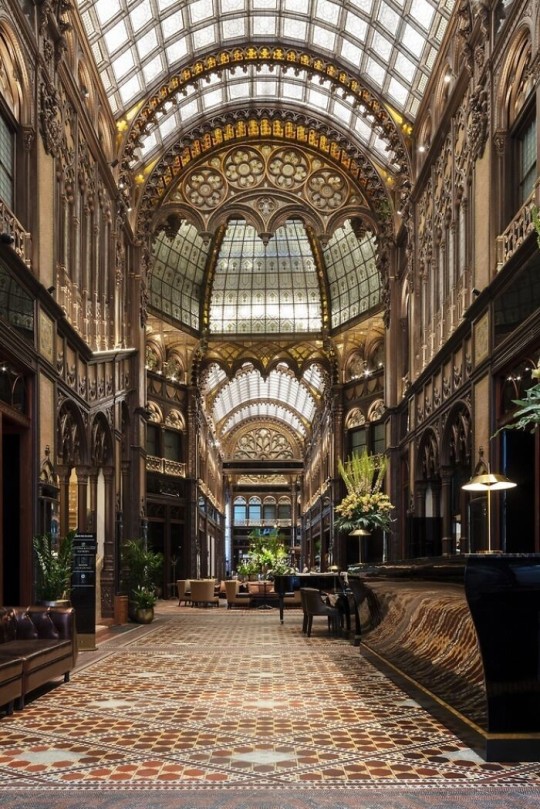
As a followup to the very popular post on architecture, I decided to add onto it by exploring the interior of each movement and the different design techniques and tastes of each era. This post at be helpful for historical fiction, fantasy or just a long read when you're bored.
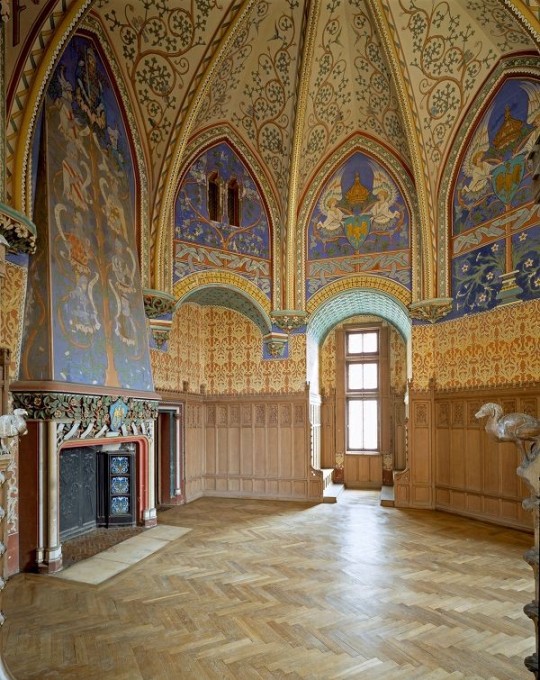


Interior Design Terms
Reeding and fluting: Fluting is a technique that consists a continuous pattern of concave grooves in a flat surface across a surface. Reeding is it's opposite.
Embossing: stamping, carving or moulding a symbol to make it stand out on a surface.
Paneling: Panels of carved wood or fabric a fixed to a wall in a continuous pattern.
Gilding: the use of gold to highlight features.
Glazed Tile: Ceramic or porcelain tiles coated with liquid coloured glass or enamel.
Column: A column is a pillar of stone or wood built to support a ceiling. We will see more of columns later on.
Bay Window: The Bay Window is a window projecting outward from a building.
Frescos: A design element of painting images upon wet plaster.
Mosaic: Mosaics are a design element that involves using pieces of coloured glass and fitted them together upon the floor or wall to form images.
Mouldings: ornate strips of carved wood along the top of a wall.
Wainscoting: paneling along the lower portion of a wall.
Chinoiserie: A European take on East Asian art. Usually seen in wallpaper.
Clerestory: A series of eye-level windows.
Sconces: A light fixture supported on a wall.
Niche: A sunken area within a wall.
Monochromatic: Focusing on a single colour within a scheme.
Ceiling rose: A moulding fashioned on the ceiling in the shape of a rose usually supporting a light fixture.
Baluster: the vertical bars of a railing.
Façade: front portion of a building
Lintel: Top of a door or window.
Portico: a covered structure over a door supported by columns
Eaves: the part of the roof overhanging from the building
Skirting: border around lower length of a wall
Ancient Greece
Houses were made of either sun-dried clay bricks or stone which were painted when they dried. Ground floors were decorated with coloured stones and tiles called Mosaics. Upper level floors were made from wood. Homes were furnished with tapestries and furniture, and in grand homes statues and grand altars would be found. Furniture was very skillfully crafted in Ancient Greece, much attention was paid to the carving and decoration of such things. Of course, Ancient Greece is ancient so I won't be going through all the movements but I will talk a little about columns.
Doric: Doric is the oldest of the orders and some argue it is the simplest. The columns of this style are set close together, without bases and carved with concave curves called flutes. The capitals (the top of the column) are plain often built with a curve at the base called an echinus and are topped by a square at the apex called an abacus. The entablature is marked by frieze of vertical channels/triglyphs. In between the channels would be detail of carved marble. The Parthenon in Athens is your best example of Doric architecture.
Ionic: The Ionic style was used for smaller buildings and the interiors. The columns had twin volutes, scroll-like designs on its capital. Between these scrolls, there was a carved curve known as an egg and in this style the entablature is much narrower and the frieze is thick with carvings. The example of Ionic Architecture is the Temple to Athena Nike at the Athens Acropolis.
Corinthian: The Corinthian style has some similarities with the Ionic order, the bases, entablature and columns almost the same but the capital is more ornate its base, column, and entablature, but its capital is far more ornate, commonly carved with depictions of acanthus leaves. The style was more slender than the others on this list, used less for bearing weight but more for decoration. Corinthian style can be found along the top levels of the Colosseum in Rome.
Tuscan: The Tuscan order shares much with the Doric order, but the columns are un-fluted and smooth. The entablature is far simpler, formed without triglyphs or guttae. The columns are capped with round capitals.
Composite: This style is mixed. It features the volutes of the Ionic order and the capitals of the Corinthian order. The volutes are larger in these columns and often more ornate. The column's capital is rather plain. for the capital, with no consistent differences to that above or below the capital.
Ancient Rome
Rome is well known for its outward architectural styles. However the Romans did know how to add that rizz to the interior. Ceilings were either vaulted or made from exploded beams that could be painted. The Romans were big into design. Moasics were a common interior sight, the use of little pieces of coloured glass or stone to create a larger image. Frescoes were used to add colour to the home, depicting mythical figures and beasts and also different textures such as stonework or brick. The Romans loved their furniture. Dining tables were low and the Romans ate on couches. Weaving was a popular pastime so there would be tapestries and wall hangings in the house. Rich households could even afford to import fine rugs from across the Empire. Glass was also a feature in Roman interior but windows were usually not paned as large panes were hard to make. Doors were usually treated with panels that were carved or in lain with bronze.
Ancient Egypt
Egypt was one of the first great civilisations, known for its immense and grand structures. Wealthy Egyptians had grand homes. The walls were painted or plastered usually with bright colours and hues. The Egyptians are cool because they mapped out their buildings in such a way to adhere to astrological movements meaning on special days if the calendar the temple or monuments were in the right place always. The columns of Egyptian where thicker, more bulbous and often had capitals shaped like bundles of papyrus reeds. Woven mats and tapestries were popular decor. Motifs from the river such as palms, papyrus and reeds were popular symbols used.
Ancient Africa
African Architecture is a very mixed bag and more structurally different and impressive than Hollywood would have you believe. Far beyond the common depictions of primitive buildings, the African nations were among the giants of their time in architecture, no style quite the same as the last but just as breathtaking.
Rwandan Architecture: The Rwandans commonly built of hardened clay with thatched roofs of dried grass or reeds. Mats of woven reeds carpeted the floors of royal abodes. These residences folded about a large public area known as a karubanda and were often so large that they became almost like a maze, connecting different chambers/huts of all kinds of uses be they residential or for other purposes.
Ashanti Architecture: The Ashanti style can be found in present day Ghana. The style incorporates walls of plaster formed of mud and designed with bright paint and buildings with a courtyard at the heart, not unlike another examples on this post. The Ashanti also formed their buildings of the favourite method of wattle and daub.
Nubian Architecture: Nubia, in modern day Ethiopia, was home to the Nubians who were one of the world's most impressive architects at the beginning of the architecture world and probably would be more talked about if it weren't for the Egyptians building monuments only up the road. The Nubians were famous for building the speos, tall tower-like spires carved of stone. The Nubians used a variety of materials and skills to build, for example wattle and daub and mudbrick. The Kingdom of Kush, the people who took over the Nubian Empire was a fan of Egyptian works even if they didn't like them very much. The Kushites began building pyramid-like structures such at the sight of Gebel Barkal
Japanese Interiors
Japenese interior design rests upon 7 principles. Kanso (簡素)- Simplicity, Fukinsei (不均整)- Asymmetry, Shizen (自然)- Natural, Shibumi (渋味) – Simple beauty, Yugen (幽玄)- subtle grace, Datsuzoku (脱俗) – freedom from habitual behaviour, Seijaku (静寂)- tranquillity.
Common features of Japanese Interior Design:
Shoji walls: these are the screens you think of when you think of the traditional Japanese homes. They are made of wooden frames, rice paper and used to partition
Tatami: Tatami mats are used within Japanese households to blanket the floors. They were made of rice straw and rush straw, laid down to cushion the floor.
Genkan: The Genkan was a sunken space between the front door and the rest of the house. This area is meant to separate the home from the outside and is where shoes are discarded before entering.
Japanese furniture: often lowest, close to the ground. These include tables and chairs but often tanked are replaced by zabuton, large cushions. Furniture is usually carved of wood in a minimalist design.
Nature: As both the Shinto and Buddhist beliefs are great influences upon architecture, there is a strong presence of nature with the architecture. Wood is used for this reason and natural light is prevalent with in the home. The orientation is meant to reflect the best view of the world.
Islamic World Interior
The Islamic world has one of the most beautiful and impressive interior design styles across the world. Colour and detail are absolute staples in the movement. Windows are usually not paned with glass but covered in ornate lattices known as jali. The jali give ventilation, light and privacy to the home. Islamic Interiors are ornate and colourful, using coloured ceramic tiles. The upper parts of walls and ceilings are usually flat decorated with arabesques (foliate ornamentation), while the lower wall areas were usually tiled. Features such as honeycombed ceilings, horseshoe arches, stalactite-fringed arches and stalactite vaults (Muqarnas) are prevalent among many famous Islamic buildings such as the Alhambra and the Blue Mosque.
Byzantine (330/395–1453 A. D)
The Byzantine Empire or Eastern Roman Empire was where eat met west, leading to a melting pot of different interior designs based on early Christian styles and Persian influences. Mosaics are probably what you think of when you think of the Byzantine Empire. Ivory was also a popular feature in the Interiors, with carved ivory or the use of it in inlay. The use of gold as a decorative feature usually by way of repoussé (decorating metals by hammering in the design from the backside of the metal). Fabrics from Persia, heavily embroidered and intricately woven along with silks from afar a field as China, would also be used to upholster furniture or be used as wall hangings. The Byzantines favoured natural light, usually from the use of copolas.
Indian Interiors
India is of course, the font of all intricate designs. India's history is sectioned into many eras but we will focus on a few to give you an idea of prevalent techniques and tastes.
The Gupta Empire (320 – 650 CE): The Gupta era was a time of stone carving. As impressive as the outside of these buildings are, the Interiors are just as amazing. Gupta era buildings featured many details such as ogee (circular or horseshoe arch), gavaksha/chandrashala (the motif centred these arches), ashlar masonry (built of squared stone blocks) with ceilings of plain, flat slabs of stone.
Delhi Sultanate (1206–1526): Another period of beautifully carved stone. The Delhi sultanate had influence from the Islamic world, with heavy uses of mosaics, brackets, intricate mouldings, columns and and hypostyle halls.
Mughal Empire (1526–1857): Stonework was also important on the Mughal Empire. Intricately carved stonework was seen in the pillars, low relief panels depicting nature images and jalis (marble screens). Stonework was also decorated in a stye known as pietra dura/parchin kari with inscriptions and geometric designs using colored stones to create images. Tilework was also popular during this period. Moasic tiles were cut and fitted together to create larger patters while cuerda seca tiles were coloured tiles outlined with black.
Chinese Interiors
Common features of Chinese Interiors
Use of Colours: Colour in Chinese Interior is usually vibrant and bold. Red and Black are are traditional colours, meant to bring luck, happiness, power, knowledge and stability to the household.
Latticework: Lattices are a staple in Chinese interiors most often seen on shutters, screens, doors of cabinets snf even traditional beds.
Lacquer: Multiple coats of lacquer are applied to furniture or cabinets (now walls) and then carved. The skill is called Diaoqi (雕漆).
Decorative Screens: Screens are used to partition off part of a room. They are usually of carved wood, pained with very intricate murals.
Shrines: Spaces were reserved on the home to honour ancestors, usually consisting of an altar where offerings could be made.
Of course, Chinese Interiors are not all the same through the different eras. While some details and techniques were interchangeable through different dynasties, usually a dynasty had a notable style or deviation. These aren't all the dynasties of course but a few interesting examples.
Song Dynasty (960–1279): The Song Dynasty is known for its stonework. Sculpture was an important part of Song Dynasty interior. It was in this period than brick and stone work became the most used material. The Song Dynasty was also known for its very intricate attention to detail, paintings, and used tiles.
Ming Dynasty(1368–1644): Ceilings were adorned with cloisons usually featuring yellow reed work. The floors would be of flagstones usually of deep tones, mostly black. The Ming Dynasty favoured richly coloured silk hangings, tapestries and furnishings. Furniture was usually carved of darker woods, arrayed in a certain way to bring peace to the dwelling.
Han Dynasty (206 BC-220 AD): Interior walls were plastered and painted to show important figures and scenes. Lacquer, though it was discovered earlier, came into greater prominence with better skill in this era.
Tang Dynasty (618–907) : The colour palette is restrained, reserved. But the Tang dynasty is not without it's beauty. Earthenware reached it's peak in this era, many homes would display fine examples as well. The Tang dynasty is famous for its upturned eaves, the ceilings supported by timber columns mounted with metal or stone bases. Glazed tiles were popular in this era, either a fixed to the roof or decorating a screen wall.
Romanesque (6th -11th century/12th)
Romanesque Architecture is a span between the end of Roman Empire to the Gothic style. Taking inspiration from the Roman and Byzantine Empires, the Romanesque period incorporates many of the styles. The most common details are carved floral and foliage symbols with the stonework of the Romanesque buildings. Cable mouldings or twisted rope-like carvings would have framed doorways. As per the name, Romansque Interiors relied heavily on its love and admiration for Rome. The Romanesque style uses geometric shapes as statements using curves, circles snf arches. The colours would be clean and warm, focusing on minimal ornamentation.
Gothic Architecture (12th Century - 16th Century)
The Gothic style is what you think of when you think of old European cathedrals and probably one of the beautiful of the styles on this list and one of most recognisable. The Gothic style is a dramatic, opposing sight and one of the easiest to describe. Decoration in this era became more ornate, stonework began to sport carving and modelling in a way it did not before. The ceilings moved away from barreled vaults to quadripartite and sexpartite vaulting. Columns slimmed as other supportive structures were invented. Intricate stained glass windows began their popularity here. In Gothic structures, everything is very symmetrical and even.
Mediaeval (500 AD to 1500)
Interiors of mediaeval homes are not quite as drab as Hollywood likes to make out. Building materials may be hidden by plaster in rich homes, sometimes even painted. Floors were either dirt strewn with rushes or flagstones in larger homes. Stonework was popular, especially around fireplaces. Grand homes would be decorated with intricate woodwork, carved heraldic beasts and wall hangings of fine fabrics.
Renaissance (late 1300s-1600s)
The Renaissance was a period of great artistry and splendor. The revival of old styles injected symmetry and colour into the homes. Frescoes were back. Painted mouldings adorned the ceilings and walls. Furniture became more ornate, fixed with luxurious upholstery and fine carvings. Caryatids (pillars in the shape of women), grotesques, Roman and Greek images were used to spruce up the place. Floors began to become more intricate, with coloured stone and marble. Modelled stucco, sgraffiti arabesques (made by cutting lines through a layer of plaster or stucco to reveal an underlayer), and fine wall painting were used in brilliant combinations in the early part of the 16th century.
Tudor Interior (1485-1603)
The Tudor period is a starkly unique style within England and very recognisable. Windows were fixed with lattice work, usually casement. Stained glass was also in in this period, usually depicting figures and heraldic beasts. Rooms would be panelled with wood or plastered. Walls would be adorned with tapestries or embroidered hangings. Windows and furniture would be furnished with fine fabrics such as brocade. Floors would typically be of wood, sometimes strewn with rush matting mixed with fresh herbs and flowers to freshen the room.
Baroque (1600 to 1750)
The Baroque period was a time for splendor and for splashing the cash. The interior of a baroque room was usually intricate, usually of a light palette, featuring a very high ceiling heavy with detail. Furniture would choke the room, ornately carved and stitched with very high quality fabrics. The rooms would be full of art not limited to just paintings but also sculptures of marble or bronze, large intricate mirrors, moldings along the walls which may be heavily gilded, chandeliers and detailed paneling.
Victorian (1837-1901)
We think of the interiors of Victorian homes as dowdy and dark but that isn't true. The Victorians favoured tapestries, intricate rugs, decorated wallpaper, exquisitely furniture, and surprisingly, bright colour. Dyes were more widely available to people of all stations and the Victorians did not want for colour. Patterns and details were usually nature inspired, usually floral or vines. Walls could also be painted to mimic a building material such as wood or marble and most likely painted in rich tones. The Victorians were suckers for furniture, preferring them grandly carved with fine fabric usually embroidered or buttoned. And they did not believe in minimalism. If you could fit another piece of furniture in a room, it was going in there. Floors were almost eclusively wood laid with the previously mentioned rugs. But the Victorians did enjoy tiled floors but restricted them to entrances. The Victorians were quite in touch with their green thumbs so expect a lot of flowers and greenery inside. with various elaborately decorated patterned rugs. And remember, the Victorians loved to display as much wealth as they could. Every shelf, cabinet, case and ledge would be chocked full of ornaments and antiques.
Edwardian/The Gilded Age/Belle Epoque (1880s-1914)
This period (I've lumped them together for simplicity) began to move away from the deep tones and ornate patterns of the Victorian period. Colour became more neutral. Nature still had a place in design. Stained glass began to become popular, especially on lampshades and light fixtures. Embossing started to gain popularity and tile work began to expand from the entrance halls to other parts of the house. Furniture began to move away from dark wood, some families favouring breathable woods like wicker. The rooms would be less cluttered.
Art Deco (1920s-1930s)
The 1920s was a time of buzz and change. Gone were the refined tastes of the pre-war era and now the wow factor was in. Walls were smoother, buildings were sharper and more jagged, doorways and windows were decorated with reeding and fluting. Pastels were in, as was the heavy use of black and white, along with gold. Mirrors and glass were in, injecting light into rooms. Gold, silver, steel and chrome were used in furnishings and decor. Geometric shapes were a favourite design choice. Again, high quality and bold fabrics were used such as animal skins or colourful velvet. It was all a rejection of the Art Noveau movement, away from nature focusing on the man made.
Modernism (1930 - 1965)
Modernism came after the Art Deco movement. Fuss and feathers were out the door and now, practicality was in. Materials used are shown as they are, wood is not painted, metal is not coated. Bright colours were acceptable but neutral palettes were favoured. Interiors were open and favoured large windows. Furniture was practical, for use rather than the ornamentation, featuring plain details of any and geometric shapes. Away from Art Deco, everything is straight, linear and streamlined.
#This took forever#I'm very tired#But enjoy#I covered as much as I could find#Fantasy Guide to interiors#interior design#Architecture#writings#writing resources#Writing reference#Writing advice#Writer's research#writing research#Writer's rescources#Writing help#Mediaeval#Renaissance#Chinese Interiors#Japanese Interiors#Indian interiors#writing#writeblr#writing reference#writing advice#writer#spilled words#writers
3K notes
·
View notes
Photo

Curious Ming Dynasty Hairpins in the shape of two shrimps. Found on a gilt silver hair cover excavated in a tomb in Shanghai. Exhibited at the Shanghai Museum of Art.
#ming dynasty#ming#chinese art#ancient china#chinese culture#hairpins#shrimps#shrimps art#antique jewelry#headdress#chinese jewelry#jewelry#jewelry design
3K notes
·
View notes